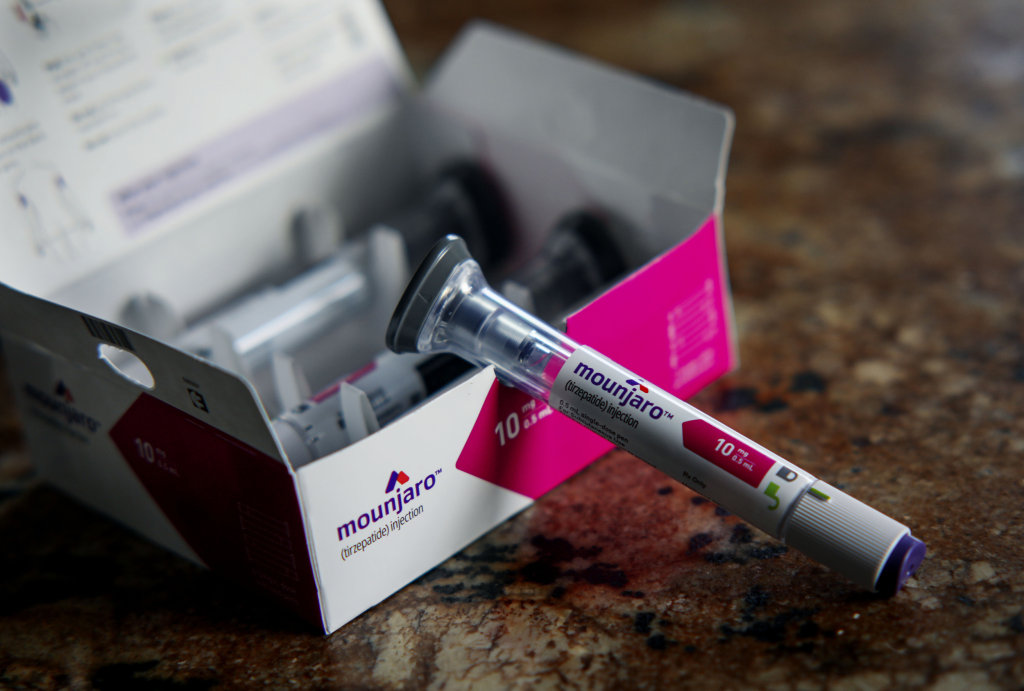Why Mounjaro injection is Your Best Choice for Managing Blood Sugar Levels

Why Mounjaro injection is Your Best Choice for Managing Blood Sugar Levels
Living with type 2 diabetes can be challenging, but finding the right treatment can make all the difference. Mounjaro injection (tirzepatide) is a once-weekly injectable medication that research suggests may be one of the most effective options for managing blood sugar levels. Here’s why it could be the best choice for you.
-
Highly effective: Mounjaro significantly lowers A1C levels, with 75%–90% of patients achieving an A1C below 7%.
-
Unique dual action: It activates both GLP-1 and GIP receptors, offering better blood sugar control than many other medications.
-
Weight loss benefits: Patients can lose 12–25 pounds, improving insulin sensitivity and overall health.
-
Convenient dosing: A once-weekly injection simplifies your treatment routine.
-
Caution advised: Potential side effects like nausea or rare risks like pancreatitis require discussion with your doctor.
What is Mounjaro?
Mounjaro is a prescription medication approved in 2022 by the FDA for adults with type 2 diabetes. It’s designed to work alongside diet and exercise to ameliorate blood sugar control. Unlike other treatments, Mounjaro’s active ingredient, tirzepatide, targets two hormones GLP-1 and GIP making it a first-in-class drug for diabetes management.

How It Helps Control Blood Sugar
Mounjaro works by mimicking the body’s natural hormones to regulate blood sugar. It increases insulin production when blood sugar is high, reduces glucose output from the liver, and slows digestion to prevent post-meal sugar spikes. This comprehensive approach helps maintain stable blood sugar levels and lowers A1C, a key measure of long-term glucose control.
Why It Stands Out
Compared to other diabetes medications like Ozempic or insulin, Mounjaro often shows superior results in clinical studies. It not only lowers blood sugar but also supports significant weight loss, which can enhance insulin sensitivity. Its once-weekly dosing is more convenient than daily injections or multiple pills, helping you stick to your treatment plan.
Who Should Consider Mounjaro?
If you’re struggling to manage your blood sugar with other treatments or want a medication that also supports weight loss, Mounjaro might be a great fit. However, it’s not for everyone those with type 1 diabetes or certain medical conditions should avoid it. Always consult your healthcare provider to peer if Mounjaro is right for you.
Why Mounjaro is Your Best Choice for Managing Blood Sugar Levels: A Comprehensive Guide
Managing type 2 diabetes efficaciously calls for a mixture of lifestyle adjustments and, regularly, the proper medicinal drug. Among the many options available, Mounjaro (tirzepatide) has emerged as a standout choice for controlling blood sugar levels in adults with type 2 diabetes. Approved by the FDA in 2022, Mounjaro offers a unique approach to diabetes management, combining powerful blood sugar control with additional benefits like weight loss and a convenient dosing schedule. This article explores why Mounjaro may be the best choice for managing blood sugar levels, backed by clinical evidence and comparisons with other treatments.
Understanding Mounjaro and Its Role in Diabetes Management
Mounjaro, developed by Eli Lilly, is a once-weekly injectable medication designed to improve blood sugar control in adults with type 2 diabetes, when used alongside diet and exercise. Its lively element, tirzepatide, is a twin glucose-based insulinotropic polypeptide (GIP) and glucagon-like peptide-1 (GLP-1) receptor agonist. This dual action makes Mounjaro the first medication of its kind, targeting two key hormones that regulate blood sugar and appetite.
Unlike traditional diabetes treatments that focus solely on insulin or single-hormone pathways, Mounjaro’s innovative mechanism provides a more comprehensive approach to managing blood glucose levels. It is not approved for type 1 diabetes or for individuals under 18, and its safety in those with a history of pancreatitis is uncertain, so consultation with a healthcare provider is essential.
How Mounjaro Works to Control Blood Sugar
Mounjaro’s effectiveness stems from its ability to mimic the body’s natural GIP and GLP-1 hormones, which play critical roles in glucose regulation. Here’s how it works:
-
Enhances Insulin Secretion: Mounjaro stimulates the pancreas to produce more insulin when blood sugar levels rise, helping to lower glucose levels effectively.
-
Reduces Glucagon Production: It suppresses glucagon, a hormone that signals the liver to release stored glucose, preventing unnecessary blood sugar spikes.
-
Slows Gastric Emptying: By slowing the rate at which food leaves the stomach, Mounjaro reduces postprandial (post-meal) blood sugar spikes, leading to more stable glucose levels.
This multi-faceted approach, detailed on the Mounjaro Official Website, makes Mounjaro particularly effective at managing both fasting and post-meal blood sugar levels, as well as lowering HbA1c (A1C), a measure of average blood sugar over two to three months.

Clinical Evidence: Mounjaro’s Superior Blood Sugar Control
Clinical trials have demonstrated Mounjaro’s remarkable ability to lower A1C levels, a critical metric for diabetes management. According to studies cited on the Mounjaro Official Website, 75% to 90% of patients taking Mounjaro achieved an A1C below 7%, a common target for people with type 2 diabetes. These results were observed across doses of 5 mg, 10 mg, and 15 mg, with average starting A1C levels ranging from 7.9% to 8.6%, measured over 40 to 52 weeks.
|
Dose |
Percentage Achieving A1C <7% |
Average Starting A1C |
Study Duration |
|---|---|---|---|
|
5 mg |
75%–90% |
7.9%–8.6% |
40–52 weeks |
|
10 mg |
75%–90% |
7.9%–8.6% |
40–52 weeks |
|
15 mg |
75%–90% |
7.9%–8.6% |
40–52 weeks |
These results highlight Mounjaro’s consistent efficacy across different doses, making it a reliable option for achieving target blood sugar levels.
Comparing Mounjaro to Other Diabetes Medications
Mounjaro’s dual GIP and GLP-1 receptor activation sets it apart from other diabetes medications, many of which target only GLP-1 receptors or rely on insulin therapy. Here’s how it compares to some common alternatives:
-
Vs. Ozempic (Semaglutide): A study presented at the European Association for the Study of Diabetes, reported by Medical News Today, found that Mounjaro was more effective than Ozempic for both blood sugar control and weight loss. Patients on Mounjaro experienced greater A1C reductions and lost more weight, making it a compelling choice for those seeking dual benefits.
-
Vs. Insulin Therapy: In a randomized clinical trial with approximately 1,400 participants, adding Mounjaro to basal insulin therapy resulted in better blood sugar control and more weight loss compared to adding fast-acting (prandial) insulin, as noted in Healthline. Mounjaro also showed a lower risk of hypoglycemia (low blood sugar) compared to insulin, which is a significant advantage for patient safety.
-
Vs. Other GLP-1 Agonists (e.g., Trulicity): Unlike single-action GLP-1 agonists, Mounjaro’s dual mechanism provides enhanced blood sugar control, as explained by Diabetes UK. This makes it a more potent option for patients with uncontrolled type 2 diabetes.
These comparisons suggest that Mounjaro may offer superior blood sugar management for many patients, particularly those who have not achieved adequate control with other treatments.
Additional Benefits: Weight Loss and Cardiovascular Health
Beyond blood sugar control, Mounjaro offers significant weight loss benefits, which can further improve diabetes management. Clinical trials reported on the Mounjaro Official Website showed that patients lost between 12 pounds (5 mg dose) and 25 pounds (15 mg dose) over 40 to 52 weeks. This weight loss is particularly beneficial for individuals with type 2 diabetes, as excess weight can worsen insulin resistance.
|
Dose |
Average Weight Loss |
Study Duration |
|---|---|---|
|
5 mg |
12 pounds |
40–52 weeks |
|
10 mg |
15–20 pounds |
40–52 weeks |
|
15 mg |
Up to 25 pounds |
40–52 weeks |
Weight loss can enhance insulin sensitivity, reduce the need for additional medications, and lower the risk of diabetes-related complications. Additionally, Mounjaro’s cardiovascular benefits, such as improved lipid profiles, may contribute to better heart health, a critical consideration for people with type 2 diabetes who are at higher risk for cardiovascular disease.
Convenience of Once-Weekly Dosing
One of Mounjaro’s most appealing features is its once-weekly injection schedule, administered subcutaneously (under the skin) in the stomach, thighs, or upper arms. This is a significant advantage over daily injections or multiple daily pills required by some other diabetes treatments. The flexibility of dosing at any time of day, as noted by Diabetes Strong, makes it easier for patients to adhere to their treatment plan, which is crucial for consistent blood sugar control.

Potential Side Effects and Considerations
While Mounjaro is highly effective, it’s important to be aware of potential side effects. Common side effects include:
-
Nausea
-
Vomiting
-
Diarrhea
-
Decreased appetite
-
Increased heart rate
More serious but rare risks include pancreatitis, gallbladder disease, and thyroid tumors, particularly in patients with a family history of medullary thyroid cancer or multiple endocrine neoplasia syndrome type 2. The Mounjaro Official Website warns that patients experiencing severe abdominal pain or symptoms like a lump in the neck should contact their healthcare provider immediately.
Mounjaro may also increase the risk of hypoglycemia when used with other medications like sulfonylureas or insulin. Symptoms of low blood sugar include dizziness, sweating, and confusion, and patients should be educated on how to manage these risks.
Mounjaro is not suitable for everyone. It is not approved for:
-
People with type 1 diabetes
-
Individuals under 18 years of age
-
Those with a history of pancreatitis or certain thyroid conditions
Patients should discuss their medical history with their healthcare provider to ensure Mounjaro is a safe and appropriate choice.
Who Should Consider Mounjaro?
Mounjaro is an excellent option for adults with type 2 diabetes who:
-
Have not achieved adequate blood sugar control with other medications.
-
Are looking to lose weight as part of their diabetes management plan.
-
Prefer the convenience of a once-weekly injection over daily treatments.
It’s particularly beneficial for those with uncontrolled type 2 diabetes or those who are obese, as the weight loss benefits can significantly improve insulin sensitivity and overall health. However, patients with specific contraindications, such as a history of pancreatitis or thyroid cancer, should explore alternative treatments.
Practical Steps to Start Mounjaro
If you’re considering Mounjaro, here are some steps to get started:
-
Consult Your Healthcare Provider: Discuss your medical history and current diabetes management plan to determine if Mounjaro is suitable.
-
Understand Dosing: Mounjaro is available in single-dose pens or multi-dose KwikPens, with doses ranging from 2.5 mg to 15 mg. Your doctor will determine the appropriate starting dose.
-
Learn Injection Techniques: Mounjaro is easy to administer at home, with flexible dosing options, as outlined by Diabetes Strong.
-
Monitor Side Effects: Be aware of potential side effects and report any concerns to your healthcare provider promptly.
-
Combine with Lifestyle Changes: For optimal results, pair Mounjaro with a healthy diet and regular exercise, as recommended by Healthline.
Conclusion
Mounjaro represents a significant advancement in type 2 diabetes management, offering a unique dual-action approach that effectively lowers blood sugar levels and A1C. Its ability to achieve A1C targets in 75%–90% of patients, combined with substantial weight loss and a convenient once-weekly dosing schedule, makes it a top choice for many. While potential side effects and contraindications require careful consideration, the evidence suggests that Mounjaro outperforms many other diabetes medications, including Ozempic and insulin, in both blood sugar control and weight management.



